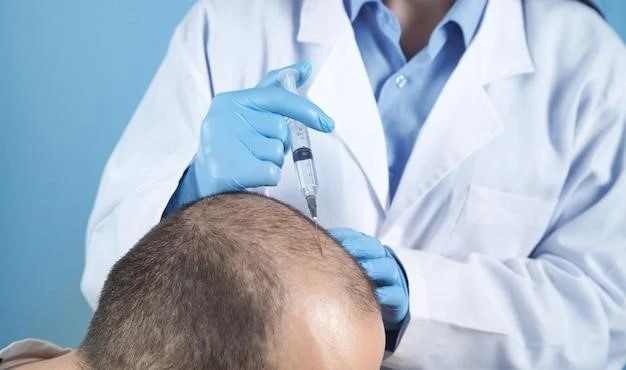Introduction to Scalp-Ear-Nipple Syndrome
The Scalp-Ear-Nipple Syndrome, as its name suggests, is characterized by abnormalities of the scalp, ears, and nipples. It is a rare genetic condition with distinct clinical features. Learn more.
Definition and Overview
The Scalp-Ear-Nipple Syndrome, also known as SEN syndrome or Finlay-Marks syndrome, is a rare genetic condition characterized by aplasia cutis congenita of the scalp, breast anomalies, and external ear abnormalities. This autosomal dominant disorder was first described in 1978 and affects various body parts beyond the triad symptoms. Genetic mutations in the KCTD1 gene are associated with the syndrome, leading to a range of physical abnormalities. Diagnosis involves physical examinations and genetic testing to confirm the condition.

Clinical Features of Scalp-Ear-Nipple Syndrome
Scalp-Ear-Nipple Syndrome presents with aplasia cutis congenita of the scalp, breast anomalies, and external ear abnormalities. The syndrome is characterized by distinct physical abnormalities affecting these areas.
Aplasia Cutis Congenita of the Scalp
Aplasia Cutis Congenita of the Scalp is a key feature of Scalp-Ear-Nipple Syndrome characterized by areas of hairless raw skin present at birth. This condition is one of the distinctive clinical hallmarks of the syndrome.
Breast Anomalies
The Scalp-Ear-Nipple Syndrome is associated with breast anomalies that can range from hypothelia or athelia to amastia. This condition presents a spectrum of variations in breast development, contributing to the distinct clinical features of the syndrome.
External Ear Abnormalities
Scalp-Ear-Nipple Syndrome manifests with external ear abnormalities, including hypoplastic ears with almost absence of pinnae. These features contribute to the unique clinical profile of the syndrome, often presenting alongside other characteristic physical abnormalities.
Pathogenic missense variants in the KCTD1 gene are linked to the autosomal dominant Scalp-Ear-Nipple Syndrome, resulting in aplasia cutis congenita of the scalp, hairless posterior scalp nodules, absent or rudimentary nipples, breast aplasia, and external ear anomalies.
Involvement of KCTD1 Gene
Pathogenic missense variants in the potassium channel tetramerization domain-containing 1 (KCTD1) gene are associated with autosomal dominant Scalp-Ear-Nipple Syndrome (SENS). These mutations lead to aplasia cutis congenita of the scalp, hairless posterior scalp nodules, absent or rudimentary nipples, breast aplasia, and external ear anomalies, contributing to the distinct clinical features of the syndrome.
Diagnosis and Evaluation
Diagnosis of Scalp-Ear-Nipple Syndrome typically involves a thorough physical examination and genetic testing to confirm the presence of the condition; Physicians may assess the characteristic features, including scalp abnormalities, breast anomalies, and ear malformations to establish a diagnosis accurately.
Physical Examination
During the physical examination for Scalp-Ear-Nipple Syndrome, healthcare providers assess the scalp for aplasia cutis congenita, evaluate breast structure for anomalies, and examine the ears for abnormalities. These clinical assessments are crucial in identifying the characteristic features of the syndrome and guiding further diagnostic steps.
Genetic Testing
Genetic testing plays a crucial role in confirming the diagnosis of Scalp-Ear-Nipple Syndrome by identifying pathogenic missense variants in the KCTD1 gene. This process helps determine the presence of specific mutations associated with the syndrome٫ aiding in accurate diagnosis and genetic counseling.
Management and Treatment Approaches
Management of Scalp-Ear-Nipple Syndrome typically involves a multidisciplinary care approach and symptomatic treatment to address the specific clinical manifestations associated with the condition. Various healthcare professionals may collaborate to provide comprehensive care for individuals with this rare genetic syndrome.
Multidisciplinary Care
Individuals diagnosed with Scalp-Ear-Nipple Syndrome often require specialized care from a multidisciplinary team comprising geneticists, dermatologists, plastic surgeons, and other healthcare professionals. This approach ensures comprehensive management of the diverse physical manifestations associated with the syndrome.
Symptomatic Treatment
Symptomatic treatment for Scalp-Ear-Nipple Syndrome aims to address specific physical manifestations associated with the condition. Management strategies may include interventions to alleviate scalp abnormalities, ear malformations, and breast anomalies, enhancing the quality of life for affected individuals.
Research and Recent Advances
Molecular studies investigating KCTD1 mutations have provided valuable insights into the mechanisms underlying Scalp-Ear-Nipple Syndrome. Recent advances in linkage analysis and exome sequencing have enhanced our understanding of the genetic basis of this rare condition.
Molecular Studies on KCTD1 Mutations
Research into KCTD1 gene mutations has been pivotal in understanding the genetic basis of Scalp-Ear-Nipple Syndrome. Recent molecular studies have provided valuable insights into the pathogenic missense variants associated with this rare autosomal dominant disorder, shedding light on the underlying mechanisms of the syndrome.
Linkage Analysis and Exome Sequencing
Recent research has utilized linkage analysis and exome sequencing to further explore the genetic mechanisms underlying Scalp-Ear-Nipple Syndrome. These advanced techniques have contributed to identifying key genetic factors associated with the syndrome, enhancing our understanding of its underlying causes.
Prognosis and Complications
Scalp-Ear-Nipple Syndrome can present potential renal and urinary tract abnormalities, along with associated dental and nail anomalies. Understanding the possible complications and prognosis of the syndrome is essential in managing the condition effectively.
Potential Renal and Urinary Tract Abnormalities
Individuals with Scalp-Ear-Nipple Syndrome may experience potential renal and urinary tract abnormalities in addition to associated dental and nail anomalies. These complications underscore the importance of comprehensive medical management in addressing the multifaceted aspects of the syndrome.
Associated Dental and Nail Anomalies
Individuals with Scalp-Ear-Nipple Syndrome may also exhibit dental anomalies and nail dystrophy in addition to the characteristic physical features of the syndrome. These associated complications underscore the complexity of the syndrome and the need for comprehensive medical care addressing multiple aspects of the condition.
Epidemiology and Prevalence
Scalp-Ear-Nipple Syndrome is a rare genetic condition with fewer than 15 reported cases to date. It is characterized by distinct clinical manifestations affecting the scalp, ears, and nipples. Understanding the rarity of the syndrome is essential in recognizing and managing this unique genetic disorder.
Rarity of Scalp-Ear-Nipple Syndrome
Scalp-Ear-Nipple Syndrome is exceptionally rare, with fewer than 15 reported cases identified so far. This genetic condition is characterized by a unique constellation of physical anomalies affecting the scalp, ears, and nipples, highlighting its uncommon occurrence in the medical literature.
Differential Diagnoses
When evaluating Scalp-Ear-Nipple Syndrome, clinicians must differentiate it from other conditions with similar physical anomalies to ensure accurate diagnosis and appropriate management strategies. Understanding the distinguishing features is crucial in providing optimal care for individuals with this rare genetic disorder.
Distinguishing SEN Syndrome from Other Conditions
When differentiating Scalp-Ear-Nipple Syndrome from other disorders, clinicians focus on identifying specific physical anomalies such as aplasia cutis congenita of the scalp, breast anomalies ranging from hypothelia to amastia, and minor ear abnormalities. Understanding these distinguishing features is critical in accurate diagnosis and appropriate management of SEN Syndrome.
Support Resources and Communities
For individuals affected by Scalp-Ear-Nipple Syndrome, accessing available support groups and communities can provide valuable assistance and a sense of community. These resources empower individuals to connect with others sharing similar experiences and receive support in navigating the challenges associated with this rare genetic condition.
Available Support Groups
Support groups dedicated to Scalp-Ear-Nipple Syndrome provide a valuable platform for individuals, families, and caregivers to connect, share experiences, access resources, and receive emotional support. These groups play a vital role in fostering a sense of community and offering assistance to those affected by this rare genetic condition.
Case Studies and Clinical Presentations
Illustrative examples of Scalp-Ear-Nipple Syndrome cases highlight the distinct physical anomalies present in affected individuals, emphasizing the unique clinical presentations associated with this rare genetic disorder.
Illustrative Examples of Scalp-Ear-Nipple Syndrome Cases
Examining specific cases of individuals with Scalp-Ear-Nipple Syndrome showcases the range of physical anomalies present, providing valuable insights into the clinical presentations of this rare genetic disorder.

Complications and Associated Disorders
Possible health issues beyond the triad symptoms of Scalp-Ear-Nipple Syndrome may include renal and urinary tract abnormalities, dental anomalies, and nail dystrophy. Awareness of these associated disorders is crucial for comprehensive medical management of individuals with this rare genetic condition.
Possible Health Issues Beyond the Triad Symptoms
In addition to the characteristic triad symptoms, individuals with Scalp-Ear-Nipple Syndrome may experience renal and urinary tract abnormalities, dental anomalies, and nail dystrophy. Understanding and addressing these potential health issues is crucial in comprehensive medical management of this rare genetic condition.
Future Directions in Scalp-Ear-Nipple Syndrome Research
Unraveling Further Genetic Mechanisms in Scalp-Ear-Nipple Syndrome is crucial for advancing our understanding of the condition and developing targeted treatments. Ongoing research efforts focus on identifying additional genes and pathways involved in the pathogenesis of this rare genetic disorder, offering promising avenues for future investigations.
Unraveling Further Genetic Mechanisms
Continued research efforts aim to unravel additional genetic mechanisms underlying Scalp-Ear-Nipple Syndrome. Investigations focus on identifying novel genes and pathways associated with the syndrome, enhancing our understanding of the complex genetic basis of this rare condition.
